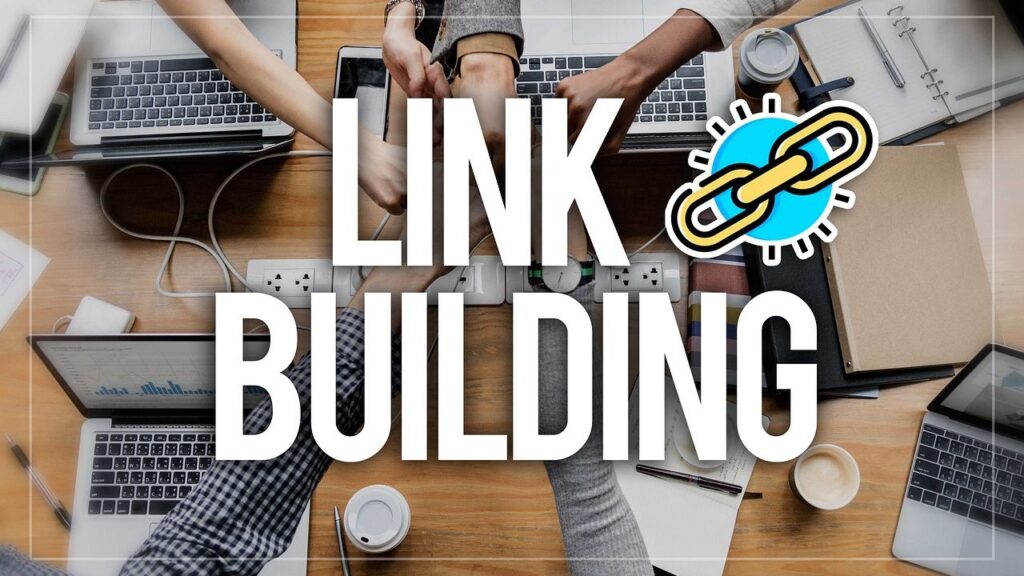Link building refers to the process of acquiring hyperlinks from other websites to your own. These inbound links are valuable for SEO because they signal to search engines like Google that a website is reputable and should rank highly the results pages. The more quality links a page has, especially from authoritative sites, the more trustworthiness and ranking power it gains in the eyes of Google.
Table of Contents
Here are some common link building mistakes people make during link building and how to avoid them

Prioritizing Quantity Over Quality
Many website owners focus solely on the number of backlinks they can acquire to a page or site. However, lower quality links from irrelevant or spammy sites can actually damage your site’s ranking ability. When doing outreach for backlinks, it’s essential to target industry leaders and respected, topically-relevant sites rather than bombarding any site willing to link back. Quality over quantity is key – a handful of links from authority sites is infinitely better than millions of poor links.
Neglecting Internal Linking
Before heavily building external backlinks, you need a solid internal linking structure in place on your own site. Point pages and posts back to related content through contextual links. This strengthens the interconnectivity and SEO value of all your pages. If adding backlinks from other sites, choose pages that already link internally to other useful info. Pages orphaned from the rest of your site won’t pass on the SEO benefits of new backlinks as effectively.
Ignoring Link Relevance
Another quality indicator is relevance. Ideally, sites linking back to you should closely relate topically to the page they are linking to. Niche-relevant links get more SEO value. Google wants to see editorially given links – relevance indicates the sites connect because they cover complementary topics in an industry – not links given solely for SEO.
Avoiding ‘NoFollow’ Links
While ‘Nofollow’ links don’t pass along ranking power directly, they still have SEO value. ‘Nofollow’ links bring targeted visitors, help establish your site authority, and diversify your backlink profile mix. A sprinkling of useful ‘Nofollows’ among other links demonstrates you have an active web presence.
Relying on Automated Link Building
Avoid link building software offering automated backlinking en masse. Not only is this against Google’s terms, but spammy software links won’t integrate naturally into relevant sites. Manual outreach and relationship-building is the best sustainable link building approach long-term.
Not Monitoring Your Backlink Profile
Use online tools to monitor and evaluate all links pointing to your site. Watch for sketchy sites, link schemes meant solely to boost rankings, or changing authority metrics of sites linking to you. Keeping tabs lets you address potential problems early and gives insight on link building impact.
Between Buying Links and Buying Done-for-You Link Building Services
There are also pitfalls between these two extremes. While buying links or using link networks violates Google guidelines, some companies sell the ineffective automated link building or make false promises. Research options thoroughly before paying – proven link builders invest serious time pitching to site owners in their network to secure editorially given placements. Monitor new links as they are built to ensure sustainability, versatile anchor text, contextual relevance and placements on reputable pages.
Link Building and Brand Building: The Perfect Partnership
Earning quality backlink partners naturally with brand-building. Landing links legitimately through outreach raises awareness of your brand and offerings. But dedicating effort solely to link building misses how content, social media and PR boost brands too. An integrated strategy that lands backlinks through audience/influencer relationships cultivated over time is today’s most powerful formula.
Between Buying Links and Buying Done-for-You Link Building Services
This section could compare and contrast the risks associated with buying links directly versus outsourcing link building through agencies or freelancers. Buying links obviously violates Google guidelines. However, not all link building services are ethical or effective either. It should advise thoroughly vetting companies, examining examples of past links secured, and monitoring new links to ensure they are adding value.
SEO, Copy, and Content Marketing: Sourcing Experts
This could offer advice on properly vetting SEO freelancers/agencies as a critical driver of link building success. Warning signs of vague portfolios or proposals, stressing importance of data-driven case studies, techniques to manage multiple content creators.
Ghostwriting Tactics
Strategic guest posting, influencer collaborations and subtle brand inserts can amplify content. This covers guidelines to ensure sponsored posts meet publisher expectations and avoid flagging while allowing exposure to new demographics.
Backlinks – Quality Versus Quantity
Further stresses making prudent link building choices – a concentrated 10-20 relevant links often outweigh 100 weak ones. Tactics to qualitative assess potential links via page authority, other URLs site links to, contextual relevance.
The Importance of Link Building in SEO
Analyzes specifically why quality links influence rankings – citations, trust flow metrics etc. Connects organic links with faster indexing, increased branded search visibility and diversified referral traffic sources. Reviews latest algorithm shifts. Cutting-edge link building tactics driving measurable objectives beyond site traffic – links to boost domain authority, decrease bounce rates, elevate the average page rank of the entire site. Surface-level metrics miss the big picture. Includes concrete examples.
Conclusion: Using a Competitor Linking Strategy to Build Robust, Relevant Backlinks
Reverse-engineering successful sites’ backlink profiles to inform ethical outreach. Get similarly authoritative placements through savvy positioning and persistence. Tactically capitalizing on rivals’ link building blueprints tailored to the niche.



